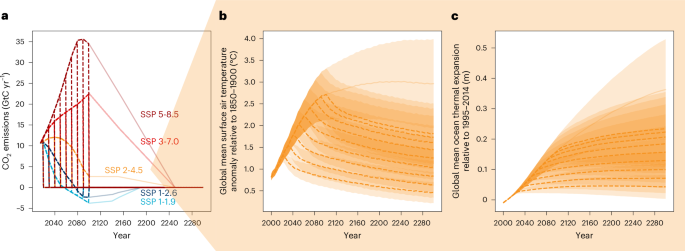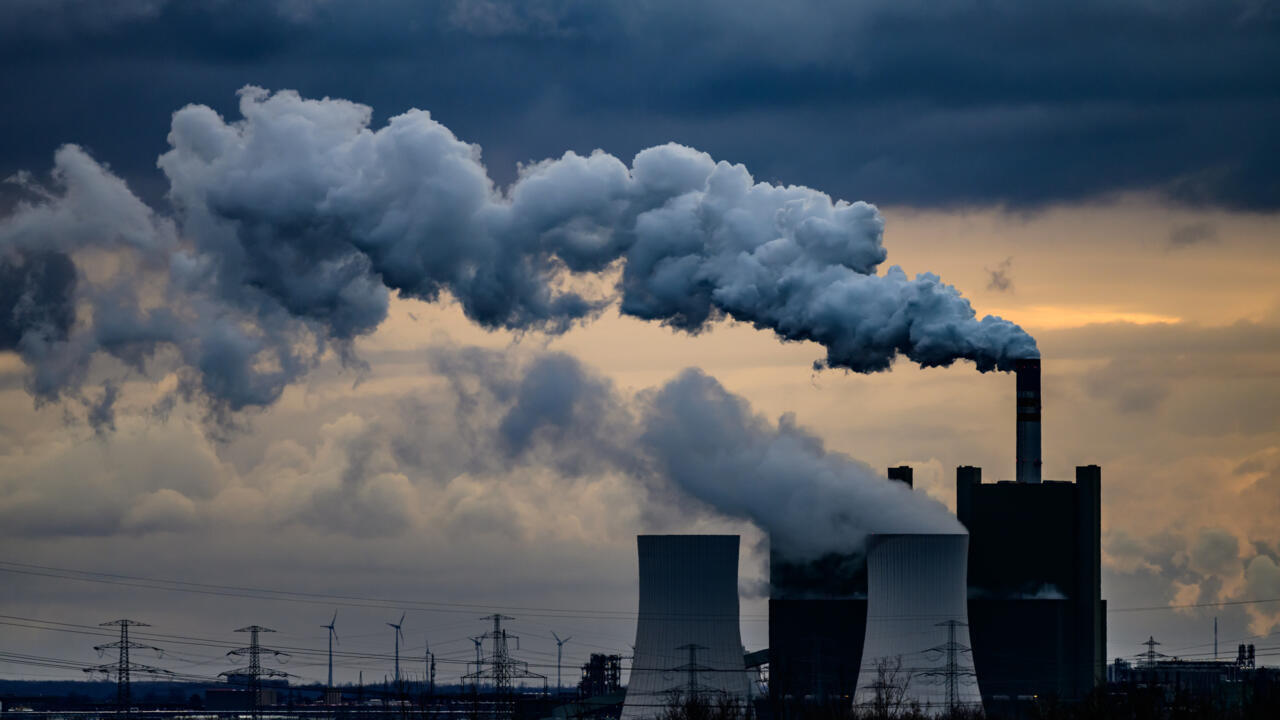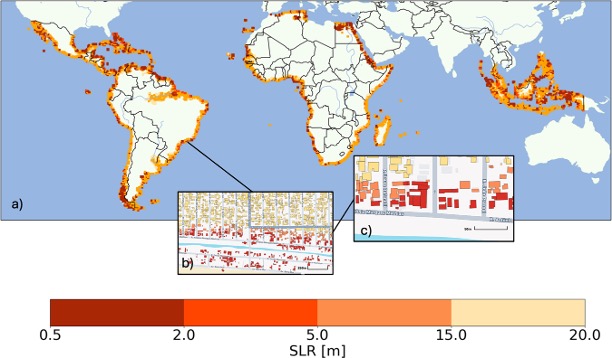Report on Climate Change Impacts and Sustainable Development Goal Alignment in Mexico
1.0 Urgent Call for Climate Action (SDG 13)
A recent analysis by experts underscores the urgent need for integrated global strategies to mitigate the escalating climate crisis, which poses a significant threat to social and economic stability. This call to action directly aligns with Sustainable Development Goal 13 (Climate Action), which urges immediate measures to combat climate change and its impacts. The Intergovernmental Panel on Climate Change (IPCC) and the World Meteorological Organization (WMO) confirm that global average temperatures have risen by approximately 1.2°C, with 2024 marking the warmest year on record. This trend intensifies extreme weather events, threatening progress across multiple SDGs.
2.0 Mexico’s Heightened Vulnerability and Socioeconomic Consequences
Mexico faces a particularly acute challenge, with its rate of warming significantly outpacing the global average. This accelerated change compromises the nation’s ability to achieve key sustainable development targets.
2.1 Disproportionate Climate Impacts
- Accelerated Warming: According to SEMARNAT, Mexico is warming at a rate of 3.2°C per century, compared to the global rate of 2°C, reducing the timeframe for adaptation.
- Regional Disparities: The impacts are not uniform, with sea-level rise being more pronounced along Mexico’s Pacific coast.
- Extreme Weather: The increase in global warming has intensified heatwaves, droughts, and forest fires, particularly affecting rural and coastal regions, which jeopardizes SDG 2 (Zero Hunger) and SDG 1 (No Poverty).
2.2 Threats to Economic Growth and Sustainable Communities (SDG 8 & SDG 11)
The climate crisis is manifesting as a severe social and economic crisis, directly undermining SDG 8 (Decent Work and Economic Growth) and SDG 11 (Sustainable Cities and Communities).
- Economic Costs: The National Institute of Ecology and Climate Change (INECC) reports that climate-related disasters cost Mexico over MX$100 billion (US$5.4 billion) annually.
- Future GDP Loss: Projections from the UNAM Climate Change Research Program (PINCC) indicate that inaction could result in a loss of 2% to 9% of Mexico’s 2024 GDP this century.
- Population Vulnerability: Over 70% of Mexico’s population resides in areas vulnerable to climate impacts, highlighting the critical need for resilient infrastructure and sustainable urban planning as outlined in SDG 11.
3.0 Strengthening Partnerships and Innovation for Climate Resilience (SDG 17 & SDG 9)
In response to these challenges, Mexico is leveraging multi-stakeholder collaboration and technological innovation to build a science-based approach to climate adaptation, reflecting the principles of SDG 17 (Partnerships for the Goals) and SDG 9 (Industry, Innovation, and Infrastructure).
3.1 Collaborative Research and Data Platforms
- PINCC Network: UNAM’s PINCC has established Mexico’s largest research network on climate change, fostering collaboration among national and Latin American institutions.
- DataPINCC Platform: A digital platform developed by PINCC to visualize and share academic modeling data, including climate projections and socioeconomic scenarios, to support evidence-based policymaking.
- Socioenvironmental Atlas: A joint project with SEMARNAT and INECC to provide accessible data on climate patterns, biodiversity, and critical infrastructure, enhancing national resilience.
4.0 Advancing National and Global Climate Commitments
Mexico’s research and collaborative efforts are foundational to strengthening its national climate strategy and contributing to global goals under the Paris Agreement. The upcoming United Nations Climate Change Conference (COP30) serves as a critical milestone for all nations to present updated Nationally Determined Contributions (NDCs). These commitments are the primary instruments for achieving the targets of SDG 13. Academic contributions from initiatives like PINCC, including its forthcoming report “State and Prospects of Climate Change in Mexico,” will be instrumental in shaping Mexico’s strategy to reduce greenhouse gas emissions and enhance adaptation to climate impacts.
Analysis of SDGs, Targets, and Indicators
1. Which SDGs are addressed or connected to the issues highlighted in the article?
-
SDG 13: Climate Action
- This is the central theme of the article. The text explicitly discusses the urgent need for strategies to mitigate the effects of climate change, citing rising global temperatures, extreme weather events, heatwaves, droughts, and forest fires. It references key climate bodies like the IPCC and WMO and international frameworks such as the Paris Agreement and the upcoming COP30 conference.
-
SDG 11: Sustainable Cities and Communities
- The article connects climate change to social and economic crises affecting human settlements. It states that “more than 70% of Mexico’s population lives in areas vulnerable to these impacts,” directly linking climate hazards to the resilience of communities. The economic costs of disasters are also highlighted as a major challenge for the population.
-
SDG 17: Partnerships for the Goals
- The article emphasizes the importance of collaboration to address climate change. It describes partnerships between academic institutions (UNAM’s PINCC), government bodies (SEMARNAT, INECC), and a broader research network across Mexico and Latin America. It also mentions the global partnership framework of the Paris Agreement, where nations present their Nationally Determined Contributions (NDCs).
2. What specific targets under those SDGs can be identified based on the article’s content?
-
Under SDG 13 (Climate Action):
- Target 13.1: Strengthen resilience and adaptive capacity to climate-related hazards and natural disasters in all countries. The article directly addresses this by highlighting Mexico’s increased warming rate (3.2°C per century) and the need to be “better prepared to confront global warming” and strengthen “adaptation to climate impacts.”
- Target 13.2: Integrate climate change measures into national policies, strategies and planning. This is shown through the mention of Mexico preparing its Nationally Determined Contributions (NDCs) for COP30, which “will outline each nation’s strategies to reduce greenhouse gas emissions and strengthen adaptation.”
- Target 13.3: Improve education, awareness-raising and human and institutional capacity on climate change mitigation, adaptation, impact reduction and early warning. The work of the PINCC, the creation of the “DataPINCC” digital platform, and the development of a “Socioenvironmental Atlas of Climate Change” are all initiatives aimed at building institutional capacity and providing data to support “science-based public policies.”
-
Under SDG 11 (Sustainable Cities and Communities):
- Target 11.5: By 2030, significantly reduce the number of deaths and the number of people affected and substantially decrease the direct economic losses relative to global gross domestic product caused by disasters. The article directly relates to this target by quantifying the “economic costs associated with disasters caused by climate change” at over “MX$100 billion (US$5.4 billion) annually” and noting that “more than 70% of Mexico’s population lives in areas vulnerable to these impacts.”
-
Under SDG 17 (Partnerships for the Goals):
- Target 17.16: Enhance the global partnership for sustainable development, complemented by multi-stakeholder partnerships that mobilize and share knowledge, expertise, technology and financial resources. The article exemplifies this through the collaboration between UNAM, SEMARNAT, and INECC, and the consolidation of “the largest and longest-standing research network in Mexico dedicated to climate change, involving numerous institutions and universities from across the country and Latin America.”
- Target 17.17: Encourage and promote effective public, public-private and civil society partnerships. The joint work between the university program (PINCC) and government ministries (SEMARNAT) on projects like the Socioenvironmental Atlas is a clear example of a public-academic partnership to achieve common goals.
3. Are there any indicators mentioned or implied in the article that can be used to measure progress towards the identified targets?
-
Climate Change Indicators:
- Global Temperature Increase: The article states the planet’s average temperature has increased by “approximately 1.2°C above pre-industrial levels.”
- Annual Temperature Anomaly: It is mentioned that 2024 had an “average thermal anomaly of 1.55°C.”
- National Rate of Warming: A specific indicator for Mexico is provided: “Mexico is warming at a rate of 3.2°C per century.”
-
Economic and Social Vulnerability Indicators:
- Economic Losses from Disasters: The article provides a direct monetary value: “economic costs associated with disasters caused by climate change exceed MX$100 billion (US$5.4 billion) annually.” This can be used to measure progress for Target 11.5.
- Projected GDP Loss: The potential economic impact of inaction is quantified as “a loss of between 2% and 9% of Mexico’s 2024 GDP.”
- Proportion of Population in Vulnerable Areas: The article states that “more than 70% of Mexico’s population lives in areas vulnerable to these impacts,” serving as a baseline indicator for resilience efforts.
-
Policy and Capacity Building Indicators:
- Development of National Climate Policies: The preparation and submission of “Nationally Determined Contributions (NDCs)” is a key indicator of progress under Target 13.2.
- Availability of Data and Knowledge Platforms: The existence and use of tools like the “DataPINCC” digital platform and the “Socioenvironmental Atlas of Climate Change” serve as indicators for improved institutional capacity and science-based policymaking (Target 13.3).
- Number and Scope of Research Partnerships: The article implies an indicator by describing the PINCC as “the largest and longest-standing research network in Mexico,” involving “numerous institutions and universities.”
4. Create a table with three columns titled ‘SDGs, Targets and Indicators” to present the findings from analyzing the article. In this table, list the Sustainable Development Goals (SDGs), their corresponding targets, and the specific indicators identified in the article.
| SDGs | Targets | Indicators |
|---|---|---|
| SDG 13: Climate Action |
13.1: Strengthen resilience and adaptive capacity to climate-related hazards.
13.2: Integrate climate change measures into national policies. 13.3: Improve education, awareness-raising and human and institutional capacity. |
– National warming rate (3.2°C per century for Mexico). – Global average temperature increase (1.2°C above pre-industrial levels). – Submission of Nationally Determined Contributions (NDCs). – Development of data platforms (DataPINCC, Socioenvironmental Atlas). |
| SDG 11: Sustainable Cities and Communities | 11.5: Significantly reduce the number of people affected and the direct economic losses caused by disasters. |
– Annual economic losses from disasters (exceeding MX$100 billion). – Percentage of population in vulnerable areas (more than 70%). – Projected GDP loss from inaction (2% to 9% of 2024 GDP). |
| SDG 17: Partnerships for the Goals |
17.16: Enhance the global partnership for sustainable development.
17.17: Encourage and promote effective public, public-private and civil society partnerships. |
– Existence of a large research network (PINCC, involving institutions across Mexico and Latin America). – Collaboration between government (SEMARNAT, INECC) and academia (UNAM). – Participation in international frameworks (Paris Agreement, COP30). |
Source: mexicobusiness.news





